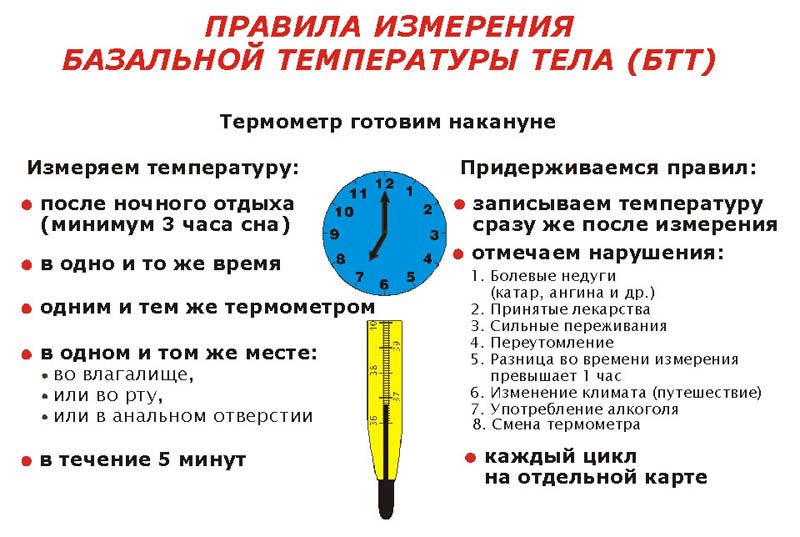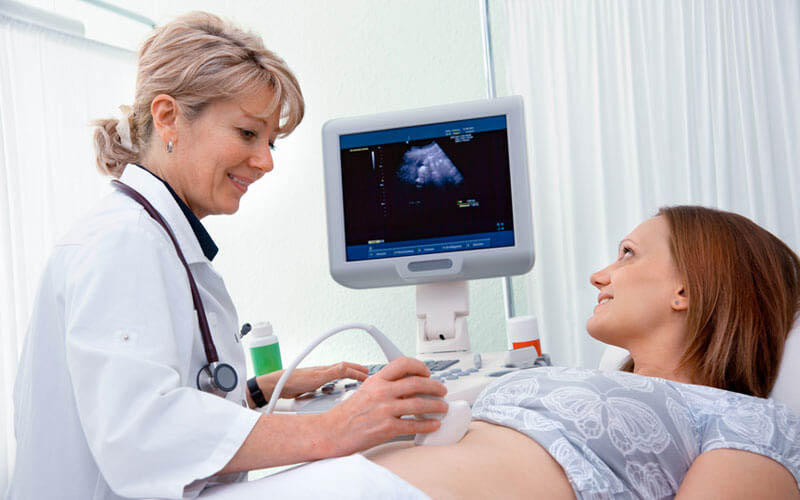Any woman who plans to become pregnant or, on the contrary, wants to avoid it, often thinks about how to determine pregnancy in the early stages. If the first one wants to quickly find out if her dream of being a mother comes true, then the second one needs to act quickly if she is ready for an abortion. And the one and the other need to listen to your body, follow the changes in it and carry out several simple experiments to recognize the pregnancy.
First of all, pay attention to the state of your body: at the slightest change, it will react and show you certain signs - you just need to notice and decipher them in time.
First of all, remember that everything depends on the woman's menstrual cycle: conception occurs only at a certain time - 1-2 days after ovulation. The cycle should always be counted from the first day of menstruation - when a new egg is prepared for release from the ovary. It ripens by the middle of the cycle: that is, if it lasts 28 days (standard), then the cell is ready for the 14th day.
Together with ovulation, the woman's body is already being prepared for conception: the endometrium becomes softer and thicker to be ready to receive a fertilized egg; the follicle, which releases the finished, mature egg, regenerates into the corpus luteum and begins to produce progesterone - it is necessary for successful implantation into the uterine walls and the preservation of pregnancy. In addition, the basal body temperature increases to 37 degrees comfortable for conception. According to experts, the body is in this state a little more than a week - and thanks to this, it is possible to determine pregnancy in the early stages.
If conception does not happen, then all indicators of the body again come to the usual rate: the body temperature drops, the corpus luteum degrades, and the endometrium peels off and goes along with menstruation. And the cycle begins again.
The first signs of pregnancy (video):
If conception has occurred, the fertilized egg continues its way through the fallopian tube, and at the same time, its division and development begins. After a week or a little more, the introduction of the ovum begins - right from this moment one of the fetal membranes, the chorion, begins to produce human chorionic gonadotropin (HCG). This hormone begins to accumulate in the body, and it is his presence and show pregnancy tests.
What is basal body temperature and how to measure it?

Early pregnancy is manifested by the fact that the basal body temperature of a woman increases. You can measure it with a standard pharmacy thermometer by inserting rectally (into the rectum) or into the vagina. In order to determine pregnancy almost unmistakably, the temperature must be measured several days in a row, necessarily strictly following the rules.
So, first of all, you need to prepare in advance: do not drink plenty of liquid at night and do not eat watery fruits; put a clock and a thermometer next to the bed, as well as a notebook and pen. This is necessary in order to measure the temperature without getting up and without changing the position of the body - the smaller the movements, the more reliable the measurement result. Every day, this ritual should be carried out at a certain time. You should also write down in your notebook the day of the menstrual cycle that a woman is having at the moment - if the basal temperature index differs from the norm, then it will be possible to recognize the pregnancy.
So, how to measure the basal temperature and learn about pregnancy at home:
- without getting out of bed and moving as little as possible, insert a thermometer and wait 5-8 minutes in a stationary state;
- record in a notebook the indicators of the thermometer, date and time.
Thanks to these observations, it will be possible to make a graph of the change in nasal temperature: at the beginning of the menstrual cycle, it keeps at around 36.5 - 36.7 degrees; and by the ovulation period it rises to about 37. If conception does not occur, then upon termination of ovulation, the basal temperature drops to the average mark; if conception occurs, such a temperature will no longer fall. That is how you can determine pregnancy before a delay and without tests.
The body signals an early pregnancy.

In the determination of pregnancy in the early stages will help and assess their feelings. Increased temperature (make sure that it is not associated with any inflammatory processes in your body), which happens because the body recognizes the embryo being born as an alien body, and immunity begins its fight with it, accompanied by swelling of the breast and color change nipple halo.
Also, in women, even during early pregnancy, nasal congestion occurs, since after conception the blood flow increases, which leads to an increased blood supply to all organs; As a result, the mucous membranes in the nose swell, which interferes with breathing. If this is not a cold or a cold runny nose, then a prolonged nasal congestion may help to recognize the pregnancy.
In addition to all this, a sign of early pregnancy in the early stages can be tingling and pain, which pull the lower abdomen or in the navel. This feeling is peculiar when the embryo comes out of the fallopian tubes and is implanted into the walls of the uterus. At the same time, slight bleeding is possible, which some women may take as the start of menstruation, but this, on the contrary, will help to recognize the pregnancy without tests: at the time of implantation a blood vessel is damaged, which causes spot bleeding. Unlike menstruation, it has a one-time nature and is much less abundant - this is precisely the sign of early pregnancy.
Not immediately, but soon the woman will notice a sick salivation and emetic urges - most pregnant women suffer from toxicosis. Also, by all means overweight will begin to appear, taste preferences will change due to increased hormonal levels; manifest fatigue and fatigue; sense of smell, sight, taste buds will be aggravated; will often change the mood - all this can accurately determine the pregnancy and without tests.
You can pay attention to the sexual desire: women either begin to refuse sex altogether, or, on the contrary, they experience a strong attraction. This, of course, is not an exact indicator by which you can recognize a pregnancy, but you should pay attention to it.
Pregnancy tests

When the body has already filed all the signs that a woman may have an early pregnancy, you can go to a pharmacy or a regular supermarket for. Medicine has already reached the point that it is possible to accurately determine pregnancy with a probability of up to 100%.
It is more effective to donate blood for the hCG indicator: with an increase in the duration of pregnancy, the amount of this hormone in the body increases, although only very sensitive tests can recognize the pregnancy at an early stage. However, by the level of hCG in the blood, it is possible to determine pregnancy before a delay even a few days after conception.
How to choose the right test? Just remember that samples sold in a pharmacy have a sensitivity of from 10 to 25 Mme / ml - and the smaller this figure, the greater the sensitivity. The test with the number 10 will catch HCG and will be able to show the pregnancy already for a period of four weeks.
Ultrasound and medical supervision

To make sure that you are 100% pregnant, you need to consult a gynecologist. In addition to the blood test for hCG, an accurate result will show the ultrasound. The study will not only confirm or deny whether a woman is pregnant, but also exclude an ectopic pregnancy. On the ultrasound machine, the doctor will be able to see the nascent embryo and the place of its fixation, as well as calculate its size. With the help of a vaginal sensor, you can accurately determine the "age" of the embryo - that is, how many weeks to him.
It is also necessary to study in the chair: a specialist feels pregnancy in the early stages, having noticed a change in the tissues of the reproductive organs. And let the gestational egg itself not be imperceptible, the mucous membranes will be blue due to the increased blood supply, the uterus itself will become more edematous, and its neck will be softer.
Folk omens or pregnancy tests at home

Despite the progress in science by the definition of pregnancy, many still do not neglect to use popular methods and check signs to determine whether conception has occurred. It is necessary to recognize that among such methods, besides some fabulous ones (like the fact that it is necessary to put two halves of one onion in a glass of water and to see if the greenery that they made), is there quite working ones? Which are based on the centuries-old study of women.
First, you can boil the urine, which was collected in the morning: bring it to 90 degrees and transfer to a clean glass dish. During pregnancy, white flakes should appear in the urine. In this way, pregnancy can be determined without any tests.
Secondly, you can determine the position with the help of iodine - and, in two ways. You can apply urine on paper or cloth and drop it on the stain with iodine: if the color turns purple, then the woman is pregnant; if brown, no. It is also possible to add one drop of iodine in a jar of morning urine: if it lingers on the surface without breaking up, then there is a pregnancy; if iodine dissolves instantly, conception did not occur.
Thirdly, you can resort to using soda: pour a teaspoon of powder in 150-200 ml of urine collected in the morning and watch. If the hiss began in the tank, then there is no pregnancy; but if there is no reaction, you can expect an addition to the family.
However, it is worth remembering that it is possible to determine pregnancy at home, and even with the help of folk signs, without being carried away. The most accurate way was and remains a visit to a gynecologist, an ultrasound specialist and testing.
Very often after the appearance of two strips on a test, a woman says to herself: “Wait! But I felt for a long time that I was pregnant! ”And for many a positive test is not a surprise, but rather a confirmation that intuition already prompted. What are the first changes in the body give our subconscious reason to suspect a pregnancy when we ourselves are still being driven away by all sorts of assumptions saying to ourselves: “Well, it’s in vain to fantasize. It’s necessary to wait until the delay! ”The article collected and analyzed not only the classic signs of pregnancy, but also the signs of pregnancy described by the participants of one of the pregnancy planning sites BEFORE THEY LEARNED ABOUT PREGNANCY and within a week after.
Small bleeding
Discharges can be either in the form of a small bleeding or just a few brown droplets, or even just a “yellowish trace” on toilet paper. Usually the accompanying thought: "Something monthly is early this time," or "well, that's monthly."
This implant bleeding is one of the earliest signs of pregnancy. Approximately 6 to 12 days after conception, the embryo lands on the uterine wall. In some women, this process is accompanied by bleeding, but in many cases no discharge appears at all, which is also normal.
Small discharge may appear periodically again in the days when the ovum more actively "live" in the wall of the uterus. Most often they are "creamy" yellow or pink consistency. They may appear after the delay, but in this case it is necessary to consult a doctor in order to eliminate the threat of abortion.
Also, the discharge of pink and yellow character can be provoked by cervical erosion, which increases with the onset of pregnancy. Cervical erosion is a violation of the integrity of the lining of the vaginal part of the cervix. During pregnancy, it becomes even more bright red color due to increased blood circulation of the cervix, it can easily bleed upon contact.
Increase in basal temperature, implant drop
When measuring the basal temperature, a sign of pregnancy is the so-called “implant dropping” - a sharp decrease in temperature for one day in the second phase. This is one of the signs most often observed in graphs with confirmed pregnancy. This decline can occur for two reasons: first, the production of the hormone progesterone, which is responsible for raising the temperature, begins to decrease from the middle of the second phase, when pregnancy begins, its production resumes again, which leads to temperature fluctuations. Secondly, during pregnancy, the hormone estrogen is released, which in turn lowers the temperature. The combination of these two hormonal shifts leads to the appearance of implantation depression on the graph.
As well as a sign of developing pregnancy is the basal temperature above 37 degrees. True, it remains elevated only for the first few weeks until the placenta begins to function.
Feeling unwell
Very many women who do not know about the coming pregnancy believe that they have caught a cold and become ill. This is due to the fact that in the first trimester of pregnancy, the woman's body temperature is increased, as well as increased fatigue. Therefore, there is a feeling that a woman falls ill.
But many people actually do not care much, probably due to a small decrease in immunity. Often there are complaints of the throat, runny nose. In this case, the main thing is not to heal yourself with strong drugs that are contraindicated during pregnancy and to use more traditional medicine.
Breast sensitization
Breast swelling or sensitization is a frequent sign of pregnancy that appears 1 to 2 weeks after conception. A woman may notice how her breasts have changed; they react to everyone, even a slight touch, hurt or swell, sometimes it is almost impossible to touch them. In turn, there are pregnant women who “do not feel” their breasts in the first weeks of pregnancy, and some even on the contrary are surprised that the breast “doesn’t hurt before menstruation” and then find out about the occurrence of pregnancy. The darkening of the skin around the nipples also indicates pregnancy.
The feeling of "fullness", heaviness in the pelvic region
During pregnancy and increased blood flow to the pelvic organs, the uterus gradually increases. Therefore, many pregnant women "feel" their uterus from the very first days of implantation and refer it to the first signs of pregnancy. Another, less pleasant side of the coin is the appearance of hemorrhoids. For many, it appears in the second half of pregnancy due to the pressure of the growing fetus, but some expectant mothers (especially those who have given birth before) encounter this trouble already in the first weeks of pregnancy, all because of the same increased blood flow.
Pricking in the uterus during pregnancy
Many pregnant women in the first or second week of pregnancy notice periodic tingling in the uterus.
Rapid fatigue / drowsiness, lack of coherence
Fatigue or apathy is a common sign of pregnancy that may appear as early as the first week after conception. One of its reasons is the increased production of the hormone “progesterone” plus a general body rebuilding for pregnancy. Progesterone depresses the psyche, which is manifested by depression, irritability and drowsiness. Beginning at 10 weeks of pregnancy, the active hormone-producing function of the placenta begins. In accordance with the increase in gestational age and fetal growth, in addition to progesterone, the level of estrogen increases, providing a stimulating effect on the psyche, and drowsiness passes.
Either hot or cold
Another early sign of pregnancy can be considered the fact that you are thrown into a fever, then into a cold, and you, accordingly, cannot warm up in three pairs of woolen socks, then it becomes hot when it is +10 outside and you are in one T-shirt . This is due to increased body temperature in the first trimester of pregnancy and a decrease in blood pressure. Interestingly, many also note the redness of the face in the evening.
Restless sleep
Many women who are not yet aware of their pregnancy say that sleep has become more restless. In the evening, they begin to go to bed earlier, and often simply "cut down", they wake up on their own as early as 6-7 in the morning and cannot fall asleep again. Also, there is a feeling of "brokenness" even after a full night's sleep.
Nausea, excessive salivation, aversion to odors
This classic sign of pregnancy often occurs between 2 and 8 weeks after conception. Some lucky women do not face the problem of nausea during pregnancy, however, 50% of women have an aversion to smells, nausea and vomiting in early pregnancy.
Vomiting during pregnancy can occur several times a day and is often combined with nausea and drooling. Vomiting is accompanied by a decrease in appetite, a change in taste and olfactory sensations. It is considered as a disorder of the neuro-endocrine regulation of body functions, and the leading role in this belongs to a violation of the functional state of the central nervous system. However, such vomiting can also be caused by factors of an intragastric nature, often being an important symptom of dysfunction of the digestive system.
Along with vomiting in toxicosis in early pregnancy due to severe irritation of the salivary center, salivation is often observed, which can lead to a significant and undesirable weight loss of the pregnant woman (up to 2-3 kg in one week). If saliva is abundantly swallowed, then, when it enters the stomach, it changes the acidity of the gastric juice and causes a disturbance of the digestive function.
It is important to bear in mind that vomiting is a protective reaction, since in this case the body is freed from toxic and rejectable substances. This is manifested evolutionary adaptation in response to adverse effects. At the same time, along with the vomit, the body loses saliva, digestive juices, containing proteins necessary for the body (including enzymes), electrolytes, and in some cases partially or completely accepted food. In this regard, with frequently repeated vomiting, water-salt, protein and fat metabolism, the balance of vitamins and mineral substances, and the activity of the endocrine glands are gradually disturbed.
Low back pain
Slight pain, "shooting" in the lower back, in the area of the sacrum may also indicate early gestational age; however, slight pain periodically occurs throughout the entire period of childbearing.
In the early stages, “shooting-ups” from the pelvic area to the legs often appear.
Headache and Migraine
A sudden increase in the level of hormones in the body can cause headaches in early pregnancy, and therefore also serve as an indirect sign of pregnancy. Usually, by the end of the first trimester, headaches subside and leave the pregnant woman enjoying her position.
Slight swelling of the hands
Progesterone also contributes to the retention of salts and fluids in the body, which can lead to slight swelling, when you feel that your fingers have become thicker when you press your hand into a fist.
Bloating, gas, bowel disorders
A frequent sign of pregnancy - a noticeable increase in the circumference of the abdomen in the very early stages of pregnancy, when the uterus has slightly increased, is associated with intestinal distention. In the process of digestion in the intestine gas always occurs. During pregnancy, the intestine becomes more "lazy", its peristalsis slows down, and, consequently, the speed at which the contents of the intestine move up decreases, its swelling increases, and constipation may occur. This is facilitated by hormonal changes characteristic of pregnancy, which leads to an increase in the blood supply to the vessels of the abdominal cavity and, as a result, to a small swelling of the intestinal walls.
Frequent urge to urinate
Frequent urination during the day and at night is the usual early sign of a pregnancy. It should be noted that while there are no other painful sensations (pain, cutting, burning). These phenomena pass to the 4th month of pregnancy. It is caused by significant hormonal changes that accompany pregnancy. An elevated level of female sex hormones at first contributes to a significant rush of blood to the pelvic organs. Overflow of blood vessels causes temporary changes in the functioning of the kidneys, ureters, bladder. These phenomena are reduced in the second trimester of pregnancy, however, they can be safely attributed to the frequent signs of pregnancy.
Pressure drop
A universal phenomenon during pregnancy is a slight decrease in blood pressure. If a woman had low blood pressure before pregnancy, then on the background of pregnancy, periodic states of significant decrease in blood pressure are possible (less than 90/60 mm Hg) and, as a result, weakness, dizziness, headache, fainting. Deterioration of well-being usually occurs during prolonged standing, while taking hot baths, with prolonged stay in a stuffy hot room, on an empty stomach. Pregnant women with a tendency to hypotension is especially important mode of the day: night sleep 9-10 hours and daytime sleep 1-2 hours.
Increased appetite / craving for certain foods
“Zhor” often accompanies an incipient pregnancy and is considered one of its signs. It is not necessary that you have a desire to eat pickles or vanilla ice cream, but many pregnant women still have a craving for certain products.
Increased vaginal discharge, the appearance of thrush
The secretion from the vagina increases - this is due to the increasing blood filling of the pelvic organs. During pregnancy, the concentration of hydrogen ions in the vaginal secretion increases, which protect the future mother's body from harmful microorganisms. But, unfortunately, yeast fungi reproduce well in this environment, and because of this, pregnant women often have thrush (candidiasis), which must be cured, otherwise fetal infection may occur, and during childbirth the tissues of the birth canal will be easier to tear.
And finally, menstruation delay
Delayed menstruation / irregular menstruation is the most common and common symptom of pregnancy that causes a woman to take a pregnancy test. During pregnancy, a woman has a monthly delay in menstruation. Many pregnant women experience bleeding, however, as a rule, menstruation quickly ends and passes less intensively than usual. The delay in menstruation can be explained by many other reasons besides pregnancy. However, if you lead an active sex life and you have a delay, it is better to take a pregnancy test.
Very often, a woman knows for sure about the occurrence of an "interesting position" even before the test shows two stripes. She is prompted by intuition and changes in the body that occur in the first days of pregnancy. What are the signs noted in most of the future moms?
Bloody issues
A small bleeding, a few brown drops are very often perceived as early periods. But, in fact, after seven to twelve days, the embryo sits on the wall of the uterus, and this process can be accompanied by bleeding. The most active secretions may begin a little late, when the fertilized egg enters the uterine wall. They are creamy, yellowish or pink in color.
Increased basal temperature, the emergence of implantation zapadeniya
If you keep a calendar record of basal temperature, then there may be a hollow on the graph, the so-called when in the second phase the temperature drops sharply one day, and the next day becomes the same.
If the basal temperature is kept above 37 degrees, then this also indicates a developing pregnancy. But this is not for long, after a few weeks the placenta will begin to function, and the temperature will drop.
Malaise
In pregnancy, a woman may feel that she has picked up some kind of virus. The temperature rises, a throat or runny nose often appears. It will pass after the first trimester. The main thing is not to use potent drugs, but to stop on the means of traditional medicine.
Chest pain
The first sensations of pregnancy are often associated with pain and hypersensitivity. Even minor touches cause discomfort.
Another common symptom is that the skin around the nipples darkens.
Heaviness in the pelvic region, tingling in the uterus
The blood flow to the pelvic area increases sharply in the first days of pregnancy, the uterus also begins to slowly grow, so there is a feeling of fullness and tingling.
Drowsiness, fatigue, irritability
The future mommy can fall into a state of apathy, drowsiness, begin to tire quickly, get annoyed over trifles. The reason for this is the activation of progesterone production. But after 10 weeks, when the body will produce more estrogens, this condition will pass by itself.
Nausea, aversion to odors, increased saliva
These are the classic symptoms that occur in the first days of pregnancy in half of women. Vomiting, loss of appetite, sensitivity to odors, changes in taste are all manifestations of early toxicosis. Begin a sharp weight loss - up to several kilograms per week. This is a natural reaction of the body, which seeks to remove toxins and cleanse. As a rule, by 16-17 weeks, the torment stops, and mommy can again enjoy her favorite dishes.
Headaches, migraines
Changes in hormonal levels can lead to frequent and severe headaches. But by the end of the first trimester, they go along with toxicosis.
Pressure drop
This is a very common symptom. Especially acute condition worsens if a woman is standing for a long time, or simply is in a hot room. This can cause fainting. If the future mom had hypotension before pregnancy, then it is especially important for her to begin to observe the rest regimen: to sleep at least nine hours a night and several hours a day.
Delayed menstruation
That is how most women determine that pregnancy has occurred. Four to five days after such a delay, it is advisable to buy a test and check everything. If all the previous signs were confirmed with two happy stripes - congratulations, you are pregnant!
What will be your first actions during pregnancy?
Well, of course, first of all, please your husband! And then - start taking care of yourself and the little one: stop drinking alcohol and smoking, eliminate as much as possible all potent medicines, replace in a bath with a warm shower, start taking vitamins for pregnant women, walk more outdoors and think about the good! I wish you happiness!
The first day of the delay, the second, the third. ... How to determine whether it is a pregnancy, is there any reason to rejoice, or worry? Whether your pregnancy was part of your plans for pregnancy or not, it’s still not worth worrying about the causes of menstrual delay, it’s better to find out as soon as possible. And we will tell you how you can learn about pregnancy, what are the first signs of pregnancy and how to confirm them.
First signs of pregnancy
There are a number of characteristic signs that can confirm your suspicions or disprove. Along with the absence of menstruation, such signs may be nausea in the morning, excessive drowsiness, swelling of the mammary glands. These are all signs of pregnancy in the first week. Some women define pregnancy by the appearance of hypersensitivity, tenderness or heaviness of the breast, as well as area pigmentation around the nipples. In addition, irritability is often intensified, and things that were previously familiar can begin to ruffle you. A characteristic sign of pregnancy is increased appetite and the appearance of so-called “taste perversions”, when you, for example, want to eat a pickle with jam, so much so that saliva flow from just one thought. If, at the same time, visits to the toilet have become more frequent, you feel frequent urge to urinate day and night - you can be almost 100% sure that you are in position.
How can you find out about pregnancy before the delay
Unfortunately, in the early period of sensation a woman is often very unpleasant. Even before the arrival of menstruation in time, you can feel cramps, pain, accompanied by implantation bleeding. By the way, one of the most accurate and earliest “symptoms” of pregnancy, occurring even before tests can reveal it, or a woman will find out that she has a missed period or any illnesses associated with pregnancy.
Such small bleeding is associated with planting, implantation of the embryo in the uterine wall of the uterus, approximately 6-10 days after conception. Monthly after that no longer occur. However, it does not occur in every woman, or may go unnoticed, as it is not directly bleeding - discharge may be pinkish in color and last for just a couple of hours, although there are exceptions - several days. But it should not be clearly expressed, otherwise it may be a sign of miscarriage at an early period, dysfunctional uterine bleeding, etc.
And so, to summarize. The first signs of pregnancy are:
- 1. implantation bleeding;
- 2. menstrual delay;
- 3. swelling or tenderness of the breast;
- 4. discharge of colostrum from the teats;
- 5. nausea and vomiting in the morning;
- 6. change in taste;
- 7. change in appetite;
- 8. irritability;
- 9. fatigue;
- 10. increased urination.
However, it’s not possible to call all these signs of pregnancy in the first week 100% accurate, they can be completely unrelated to pregnancy. then signs are indirect, and they may not be at all, or vice versa, indirect signs are available, but there is no pregnancy.
What is this if not a pregnancy?
First of all, it is a symptom of ordinary menstruation. Secondly, the impressionability of many women who are experiencing the onset of pregnancy often results in nausea and other symptoms for psychological reasons only. There are a number of factors that affect ovulation and, accordingly, provoke delayed menstruation, failure of the menstrual cycle:
- 1. stress;
- 3. travel;
- 4. diseases;
- 5. medication;
- 6. physical exertion and overload;
- 7. a sharp change in weight (for example, after a strict diet).
How to determine pregnancy?
There are much more reliable ways to determine pregnancy than recognition of symptoms. But even they in the early stages are not able to give a 100% result. These include:
- 1. pharmacy tests;
- 2. measurement of BT (basal temperature);
- 3. laboratory tests;
- 4. ultrasound examination.
How to determine the pregnancy pharmacy test?
Today in the pharmacy you can buy various types of tests, both according to the method of use, and the reliability of determining the results:
- 1. test strips (strip test);
- 2. test cartridges (tablet tests);
- 3. jet tests;
- 4. electronic tests.
When to do a pregnancy test?
Pharmacy tests are justified in use with a menstrual delay of 1-2 days. The question "when to do a pregnancy test" can be answered that the tests are designed for early diagnosis of pregnancy, and most of them determine it on the first day of the delay. Tests are very easy to use, affordable and fairly reliable. The accuracy of the result will be significantly higher if you conduct research 2-3 times.
The basis of the test, despite their external differences, is the reaction, the detectable specific hormone that is produced by the woman’s body during pregnancy - chorionic gonadotropin (CG). that hormone, along with its decay products are excreted by the body with urine. The chemical reactant contained in the plate or strip of dough enters into interaction with them. It is better to examine the morning portion of urine and be sure to wash it. In the morning urine contains the maximum amount of the hormone HCG, and such a study will give the most accurate result.
Test strips
The strips, among other studies, are the most popular, least expensive, and simplest of the tests.
- 1. Wash and collect the morning urine in a clean container.
- 2. Dip the paper test strip in the urine to a certain point and hold it for 10-20 seconds.
- 3. Now place the strip on a dry horizontal surface. You can evaluate the result in a few minutes.
- 4. One red strip formed on the test means that you are not pregnant. Two red stripes - it's time to accept congratulations, you are pregnant!
Disadvantages of the strip test:
- 1. If the test strip in the urine is underexposed or overexposed, the result may be erroneous;
- 2. The reagent carrier in strip tests is paper, which does not always allow to withstand accurate concentration, and, accordingly, leads to an erroneous, incorrect result.
- 3. Paper strips require appropriate storage. Staying a dough in conditions of increased dampness may affect its quality, the further reliability of its reaction.
Tablet Tests
These determinants of pregnancy in the early stages are more expensive, but also more convenient to use. Test tapes are the second generation of tests, although they are the same test strips, only in a plastic tablet.
How to use the pregnancy test:
It is not necessary to immerse the test cassette in a liquid; a single drop of urine is sufficient for testing. On the front side of the tablet test there are two windows. In the first you need to drop a little urine with a pipette attached to the test. The second window is the control window; in a few minutes you will see the result.
The pros and cons of test cassettes:
- 1. The quality and sensitivity of the tablet tests are the same as for the strip tests, however, the price can exceed the cost of 5-10 times the cost of ordinary strips.
- 2. If you know about your pregnancy, but you want to save this moment, leave a test for memory, get a tablet test - it is easy to store and beautiful enough.
Inkjet tests
They are called the third generation of tests. Their device is more complex, but also more reliable, both in terms of design and in terms of results. Inside the jet dough is a fibrous rod consisting of tubules. On this rod, urine very quickly rises straight to the test part of it - the reagent. Due to this structure, HCG will firmly attach to the test part, if it is present in the urine. This allows you not to worry about whether you have overheated the test or, on the contrary, underexposed, as well as to conduct research when it is convenient for you.
To determine the presence of pregnancy, simply substitute the receiving end of the test under a stream of urine. And it can be done at any time of the day. You will see the result in a few minutes - one or two strips. Inkjet tests are much more expensive than tablet tests, and this is perhaps their only drawback.
Advantages of inkjet tests:
- 1. No need to collect urine;
- 2. You can use them at any time during the day, not just in the morning;
- 3. They are convenient to use;
- 4. They are highly sensitive.
electronic tests
The only significant difference between the electronic test and the others is the “pregnant” inscription, which appears if you are pregnant, or the “pregnant pregnant” inscription if there is no pregnancy. The convenience of the electronic test consists in the absence of the need to break eyes and to doubt how many strips you saw. Externally, the test is very cute, so it is perfect for storage, besides considering the highest cost among all the tests, throwing them out in a couple of minutes is just a waste of time. Although it is up to you.
How to choose a pregnancy test?
When buying a test, pay attention to its sensitivity. It is measured in mMe / ml - international units per milliliter. The test with a pledged sensitivity of 10 mMe / ml recognizes the hormone hCG in a significantly lower concentration than 20 mMe / ml, and therefore is able to determine pregnancy at an earlier period. Hypersensitive tests can reveal it after 7-10 days after conception, less sensitive - only from the first day of the delay of menstruation. Most of the tests sold in a pharmacy have a sensitivity, usually at 20-25 mMe / ml.
When buying, do not forget to check the validity of the test. An expired reagent can mislead you and give an incorrect result.
If the test study gave a positive result, be sure to visit the gynecologist. You need to make sure to confirm that the pregnancy is normal, because the test can react equally well to an ectopic pregnancy.
Can a pregnancy test be wrong?
In the early stages, no studies are able to give a 100% result. However, pregnancy tests have high accuracy and the percentage of confirmed cases - 95-98%. Nevertheless, the answer to the question “whether a pregnancy test can be wrong” is unambiguous: yes, it can, both with regard to the presence and absence of pregnancy.
A false-negative test result happens when:
- 1. The test study was carried out too early, with a very low level of pregnancy hormone;
- 2. the rules of the instruction are not followed, and the test was conducted with errors;
- 3. you have excessive fluid intake, which diluted urine and reduced the concentration of hCG;
- 4. The test is expired.
False positive test result happens when:
- 1. there are dysfunctional diseases of the ovaries;
- 2. A pregnancy hormone is produced by a tumor - a tumor.
How to determine pregnancy without a test, using the measurement of BT?
The definition of pregnancy by measuring the basal temperature is a fairly reliable method, but it is very troublesome and quite complex. First, it is necessary to know your own menstrual cycle well, to keep a schedule of temperatures regularly. Secondly, the research process is quite lengthy, and therefore justified only when visiting the doctor is not rational, there is no opportunity to be examined, the gynecologist does not, or in cases when the onset of pregnancy is welcome, but monthly visits to the doctor do not justify themselves.
From the next day, or rather the morning of the delay of menstruation, you can measure the basal temperature. To do this, enter the usual medical thermometer into the rectum, it should not be done deeply - 2 cm is quite enough. It is necessary to measure the temperature for 5-7 minutes and be sure immediately after a night's sleep, without getting out of bed. A stable excess of temperature of 37 ° C indicates a possible pregnancy. However, even during pregnancy, lower temperatures may occur, often this happens with the threat of miscarriage - spontaneous abortion.
How to determine pregnancy without a test:
- 1. That the pregnancy has come, you can be sure if the temperature is above 37 ° C lasts for 3 days longer than the corpus luteum phase characteristic of your body (i.e., the phase in the interval after ovulation and before menstruation, which is characterized by high temperatures). For example, if it usually lasts 12 days, and suddenly it becomes - 16, then the probability of pregnancy is high. The first phase, especially when the cycle is irregular, is quite different in duration, but the phase of the corpus luteum is usually very stable and averages 12-14 days. There is no need to observe the entire cycle - no, you need to follow precisely the second phase of the cycle.
- 2. High probability of pregnancy, gives the appearance the third level of high temperatures. The schedule usually consists of two phases: first, the temperature phase is low, and after ovulation, when the second temperature occurs, the temperature rises sharply - this is the phase of the corpus luteum. In pregnancy, there is the appearance of an additional jump (after the second phase) of increasing temperatures, then the graph becomes three-phase.
- 3. Observation more high temperatures 18 days in a row evidence of pregnancy.
Pregnancy test using laboratory tests
Analysis for hCG.
There is another early diagnosis of pregnancy - laboratory testing of blood for hCG. This method is more reliable than the study of urine, moreover, it significantly delays the terms of determination to earlier ones. In the ovaries of a woman under the influence of human chorionic gonadotropin, a protein complex synthesized by certain cells of the embryo and then the placenta, hormones are produced that are necessary for normal pregnancy: progesterone, estriol and estradiol.
To determine the presence of pregnancy on such a blood test, you can already from 6-7 days after conception. Ideally, the result of the analysis after blood donation is ready in 5 hours.
Analysis of trophoblastic beta-globulin.
A more complex, but more reliable method of detecting pregnancy is based on measuring the level of hormones in the female body by a laboratory method. In this case, venous blood is tested for the level of a more specific hormone - trophoblastic beta-globulin. Such an analysis not only provides the most reliable information, but also allows you to determine the expected duration of a possible pregnancy. The laboratory method will take some time to confirm the results, and it is advisable to carry it out even before the delay of menstruation, after conception after 10 days.
How can you find out about pregnancy with ultrasound?
Ultrasound - one of the most accurate methods, one can say the most accurate way to determine pregnancy. However, it is advisable to conduct an ultrasound examination not earlier than 3 weeks after conception.
Ultrasound technique may be different:
- 1. transabdominal examination - through the anterior abdominal wall;
- 2. transvaginal examination - The introduction of the sensor into the vagina.
Undoubtedly, transvaginal ultrasound, more reliable. In the short term, it is able to show the ovum in the uterus, about 5 mm in diameter. In addition to the definition of pregnancy, ultrasound helps to ensure that this pregnancy is not ectopic.
It is worth noting the negative point of this, at first glance, the ideal study. Among physicians there is an opinion (although not having sufficient evidence) that in the early stages, in particular, up to 9 weeks, an ultrasound examination can provoke an abortion. Like it or not, it is clearly not worth abuse.
And so, can you boast positive results of all tests? Then - congratulations! After all, pregnancy is a unique phenomenon - God's gift! Judge for yourself, in a healthy woman out of 12 monthly cycles, ovulation occurs at only 10, but even this does not guarantee pregnancy. You can safely consider yourself lucky! But first - to the doctor. He must confirm the pregnancy, eliminate all kinds of infections, or prescribe treatment for them, and suggest how to make the pregnancy cloudless, and the health of the future baby strong!
How to determine early pregnancy
For many young women, the issue of determining early pregnancy is very important. After all, further life and fate often depend on this. Some are eager to have a child, others are very afraid of getting pregnant.
Regardless of the desire to have a baby, you should be able to determine pregnancy in the early stages. Of course, you should not immediately go to the doctor, because he will not be able to diagnose pregnancy after several days of delay. During this period, you can take other methods of such diagnostics. So, let's talk in more detail about home, medical and folk methods of determining pregnancy in the early stages.
Diagnose pregnancy at home
In our time, women no longer go to the doctor with the slightest suspicion of pregnancy. Primary diagnosis can be done at home with the help of pharmacy pregnancy tests. These funds are sold at different prices, and it depends on the sensitivity of the test. So, a test with a sensitivity indicator of 20 is more reliable than one that has this indicator of 25. And naturally more expensive. But sensitivity is an opportunity at the earliest possible time to determine the presence of pregnancy, that is, the very next day after the delay.
The two stripes on the test are a positive reaction to the presence in the urine of the hormone human chorionic gonadotropin, which is present only in the body of a pregnant woman. There is a hormone - there is a pregnancy, and a sensitive test clearly and reliably confirms this.
If you want to make sure that you are in an interesting position, you can do another test the next day. As a rule, in 99% of cases the result will be the same.
Measure the basal temperature
Is it possible to determine the presence of pregnancy in the first days after conception? That is, before the start of the delay of menstruation? One option is to measure the basal temperature. This can be done in the rectum or keep a thermometer in your mouth. It is important to take measurements early in the morning, without getting out of bed, in a state of complete rest. If the thermometer after probable conception will show 37 degrees and more for several days in a row, then you are probably pregnant.
In this case, it is necessary to take into account that many factors affect the result, that is, the temperature. Even sexual intercourse a few hours before the temperature measurement can provoke an increase in it. And in the autumn period, such a temperature can be an indicator of the beginning cold disease.
When menstruation is delayed, the woman is visited with a joyful thought about pregnancy. Many women do not want to go immediately to the gynecologist. Women interested in, without a test, in the early stages, at home?
Diagnosing the interesting position of a woman
Pregnancy can not be asymptomatic. The signs that appear in early pregnancy help the woman suggest an interesting position. Signs of upcoming maternity may occur even before the onset of pregnancy.
Almost from the beginning of pregnancy, the hormonal background of the female body changes, which is revealed in the change in taste preferences and hormonal levels. You can also learn about pregnancy by increasing the sensitivity of a woman’s breasts and their swelling. Some representatives of the female in the period of early pregnancy appear pigment spots. They disappear after the birth of the child.
Women can find out about their interesting position on toxicosis. It manifests itself in the early stages. In this position, females may rise in body temperature up to 37.3 degrees. Such temperature to eliminate with the help of medicines is prohibited. During this period, the female representative changes her sense of smell: it is difficult for her to tolerate certain smells (perfumes, dishes). A feeling of heaviness may appear in the lumbar region. This indicates the expansion of the uterus. During early pregnancy, almost all women have increased drowsiness.

In the early stages
In the early stages of the pregnant woman becomes touchy, tearful, irritable, sensitive. Such signs resemble the manifestation of menstrual syndrome. If the monthly does not occur, then it says about pregnancy. At the beginning of the abdomen, pains of a cutting or piercing nature may appear. If the pain in this place is not observed, it speaks of a normal pregnancy. Otherwise, the best thing would be to a specialist.
With a sharp increase or decrease in desire in sexual relationships, it is also possible to judge pregnancy. The condition is explained by the presence of changes in the hormonal background of the woman in position. In the initial period of pregnancy, mucous membranes that do not have odor and color are excreted from the vagina of a woman.
Attention! Another color or structure indicates women's health problems. It is necessary to consult a gynecologist.
With the onset of pregnancy in women, the urge to urinate becomes more frequent. They are absolutely painless. This is because the sphincter muscles are affected by hormones. If during the urges pain and discomfort occur, this indicates the appearance or other diseases of the female urogenital system.

In early pregnancy, body weight may increase. Many women claim that they did not change their diet and lifestyle, but began to gain weight. This is the main sign of pregnancy. To determine pregnancy by these signs is quite realistic, but they do not appear in all women. In this case, it is necessary to take more rational measures.
Important! Read our article at home.
Determination of pregnancy by basal temperature
Basal temperature is one of the main indicators with which you can determine an interesting position. The method has advantages due to its availability. To measure the basal temperature and determine the presence of a fetus by its indicators, it is necessary to use a thermometer, a pen and a sheet of paper. Determination of temperature is made in the same place.

You can measure the temperature in the vagina or in the rectum. It is necessary to perform the procedure in the morning, immediately after waking up. The temperature is determined throughout the cycle. When using a digital thermometer, it is held in the vagina or rectum for 4 minutes, and during use of the mercury thermometer - for 5 minutes.
Important! During one cycle, use the same thermometer for measurements.
Exact conclusions on the availability of the fetus can be made only after three months of basal temperature measurements.
Using folk methods
To determine whether a woman has a fetus, you do not need to buy tests: you can use an ordinary first-aid kit. To determine pregnancy at home without a test, you can use:
- urine;
- soda;

Iodine
Urine is often used to determine the presence of a fetus. After urinating in the morning, it is collected in a container and a few drops of iodine are dripping. If the droplet remains in its original state, then the woman has the fruit. Also, a white sheet of paper is moistened with urine and a drop of iodine is dripped onto it. The lilac color of iodine on paper indicates a positive result, and purple indicates a lack of fruit. Urine watering the bushes of plants. In the people, it is believed that a woman’s pregnancy can be determined by whether a flowering bush blooms.
Soda
In a glass with urine dipped teaspoon of soda. Hissing soda says about the pregnancy of a woman, and her loss in the sediment - about a negative result. During pregnancy, the urine of a woman has an increased acidity, which explains the coming into contact with her soda.
Important! The method is not absolutely effective: the increased acidity of urine may be in the presence of diseases of the urogenital system or vegetarians.